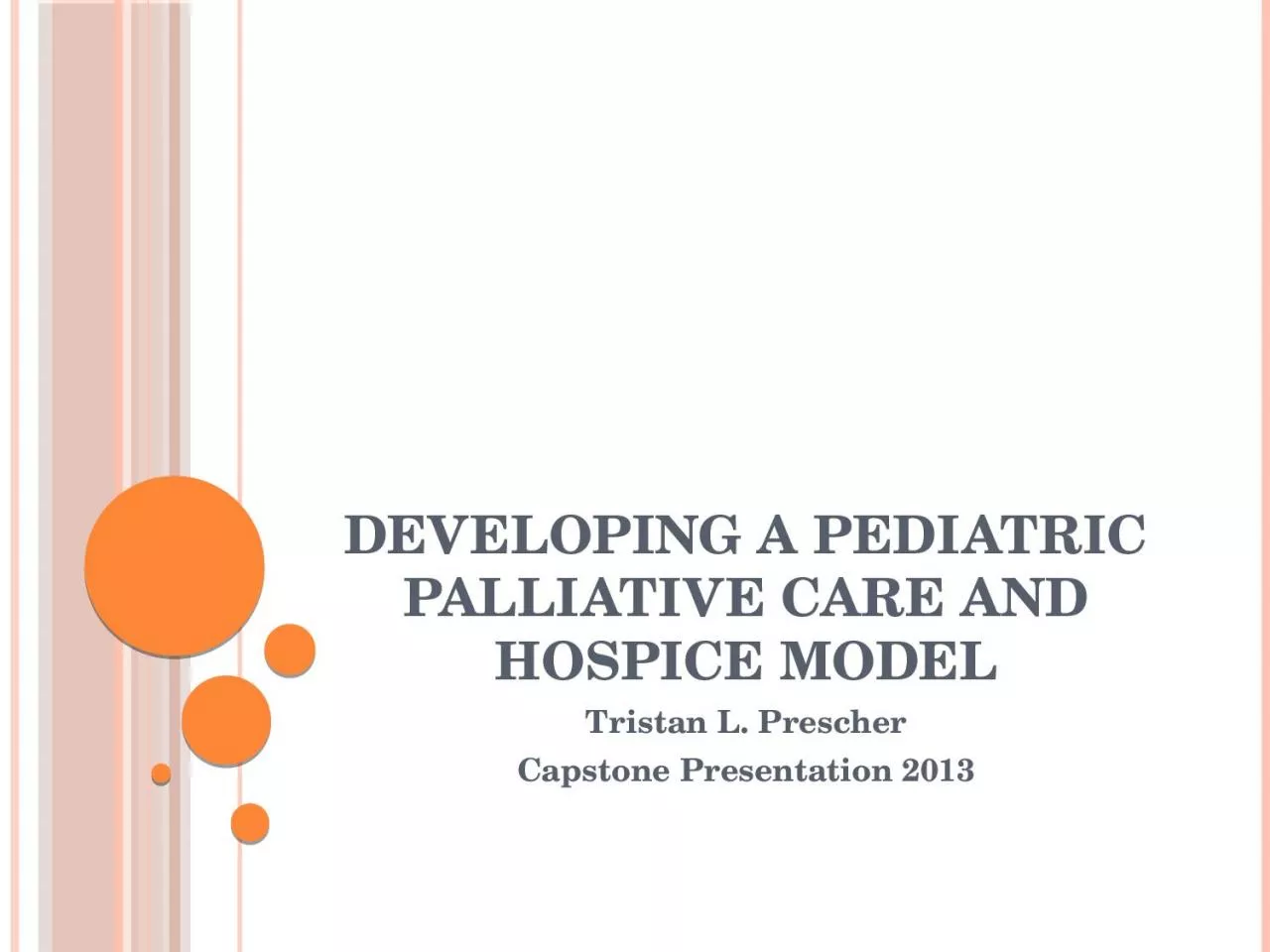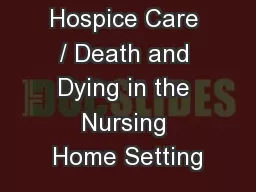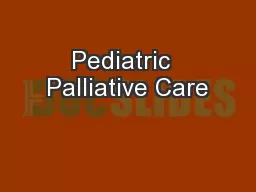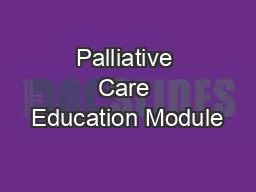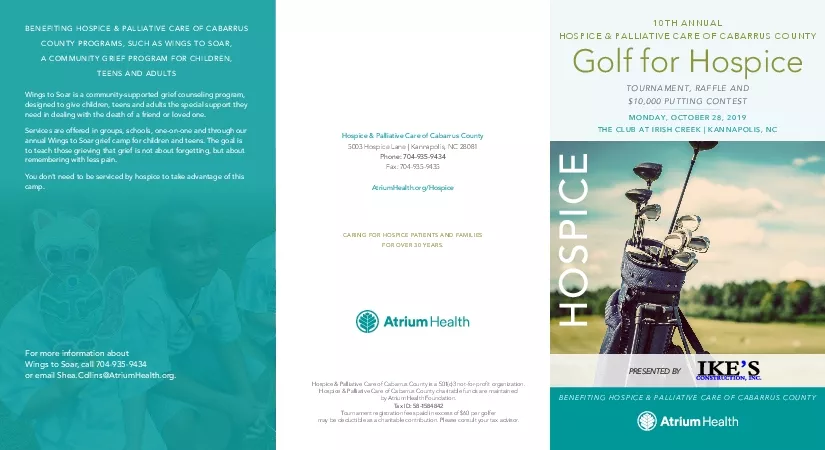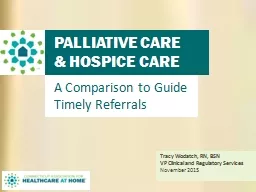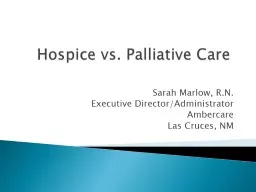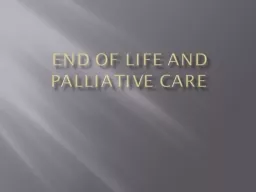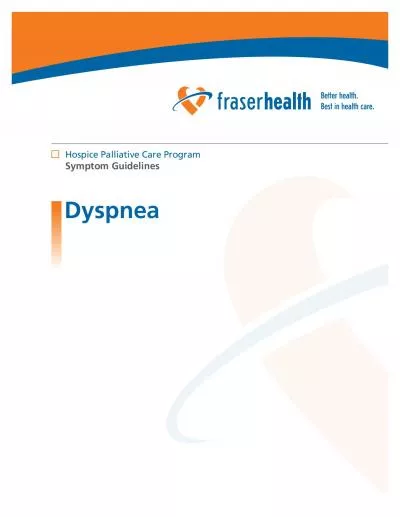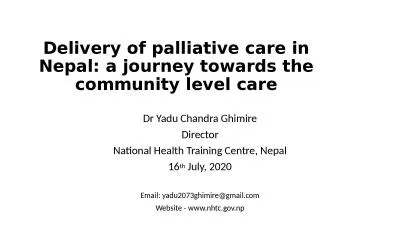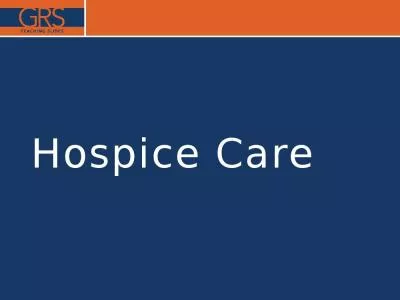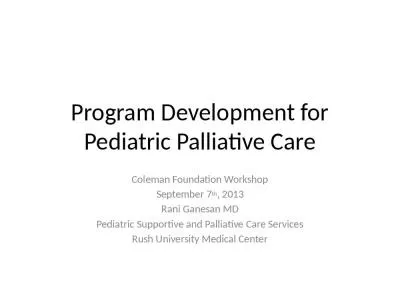PPT-Developing a pediatric palliative care and hospice model
Author : iamamercy | Published Date : 2020-08-28
Tristan L Prescher Capstone Presentation 2013 Recognition of a problem Early exposure to pediatric hospice process Case example Mario Communication issues Role
Presentation Embed Code
Download Presentation
Download Presentation The PPT/PDF document "Developing a pediatric palliative care a..." is the property of its rightful owner. Permission is granted to download and print the materials on this website for personal, non-commercial use only, and to display it on your personal computer provided you do not modify the materials and that you retain all copyright notices contained in the materials. By downloading content from our website, you accept the terms of this agreement.
Developing a pediatric palliative care and hospice model: Transcript
Download Rules Of Document
"Developing a pediatric palliative care and hospice model"The content belongs to its owner. You may download and print it for personal use, without modification, and keep all copyright notices. By downloading, you agree to these terms.
Related Documents

